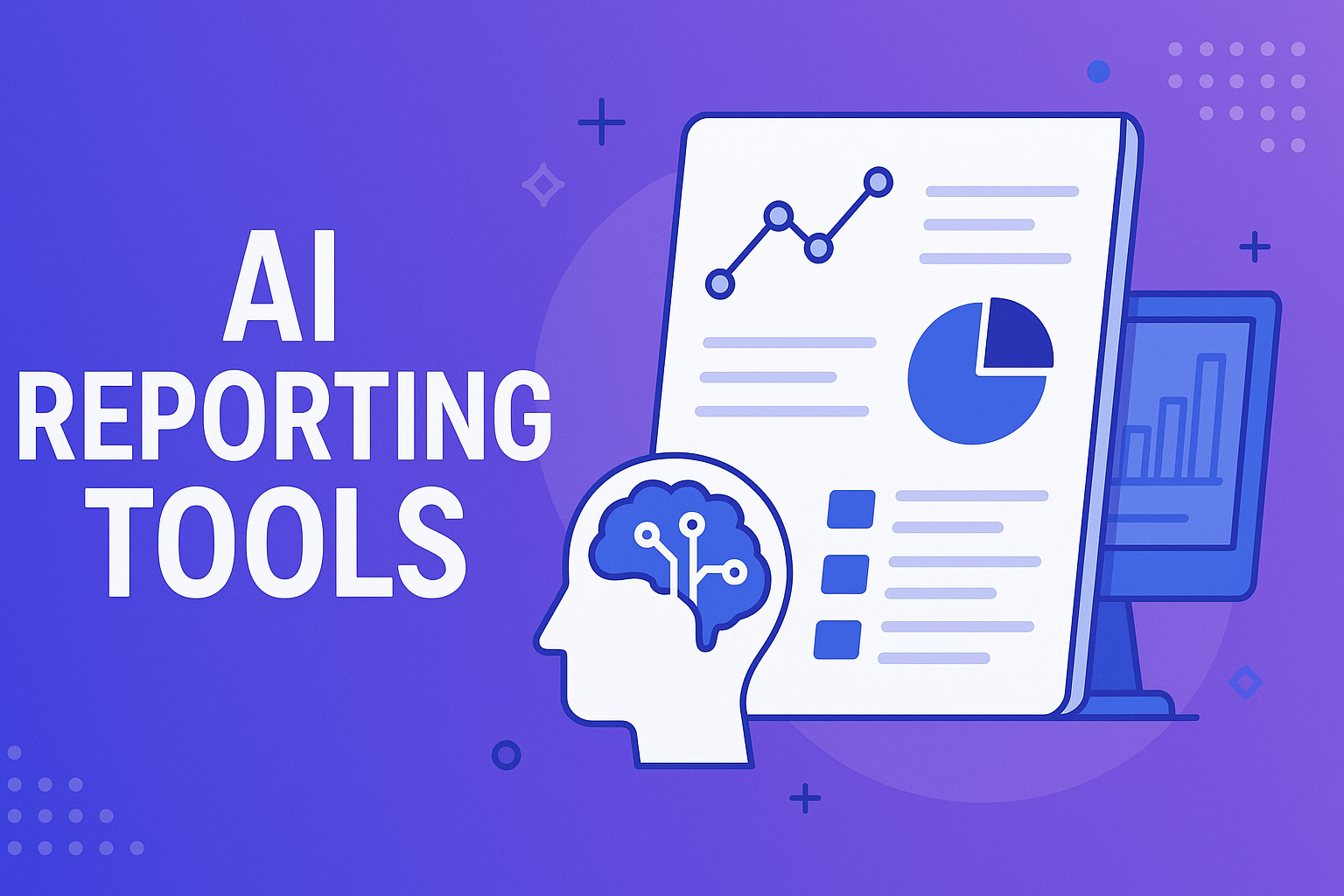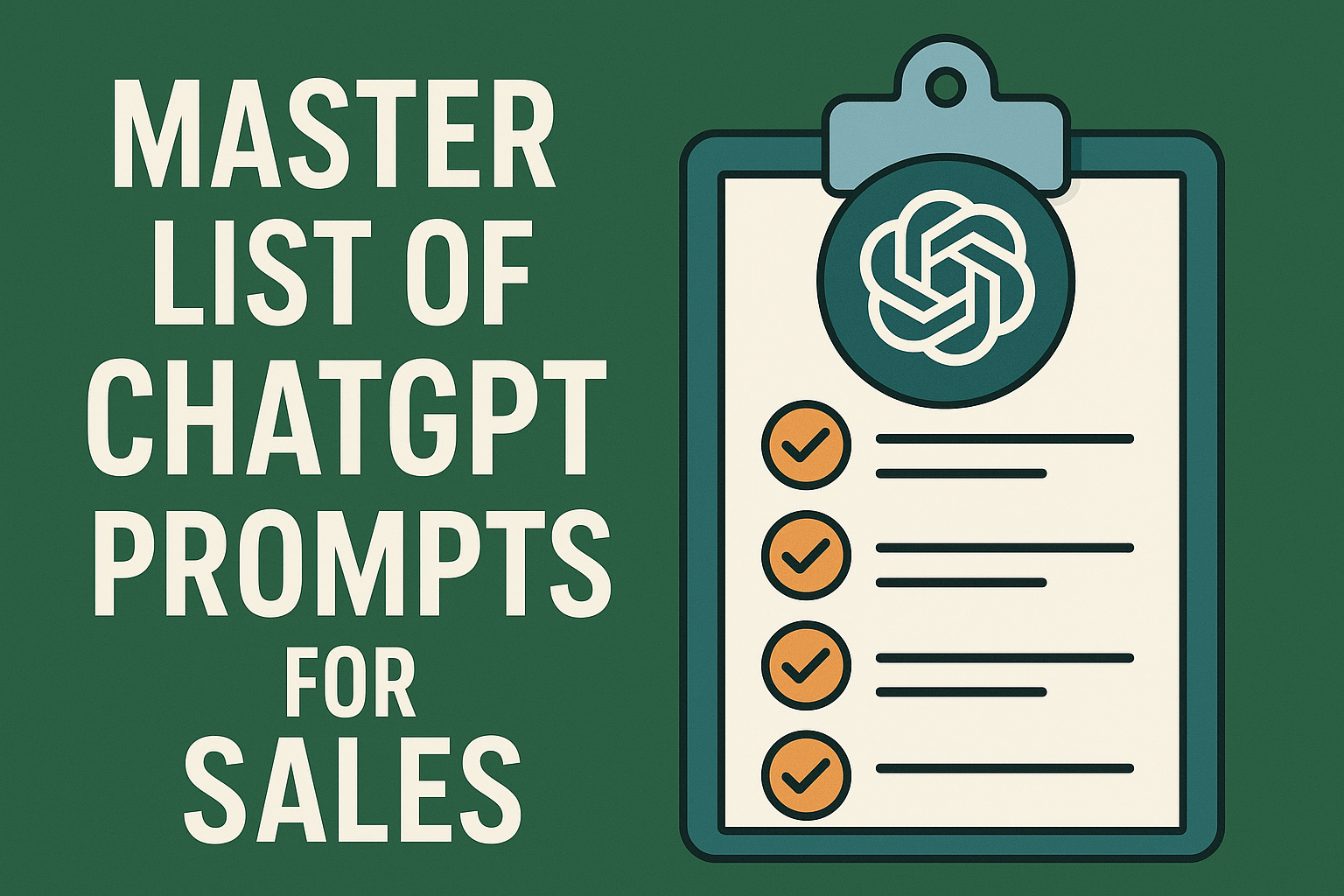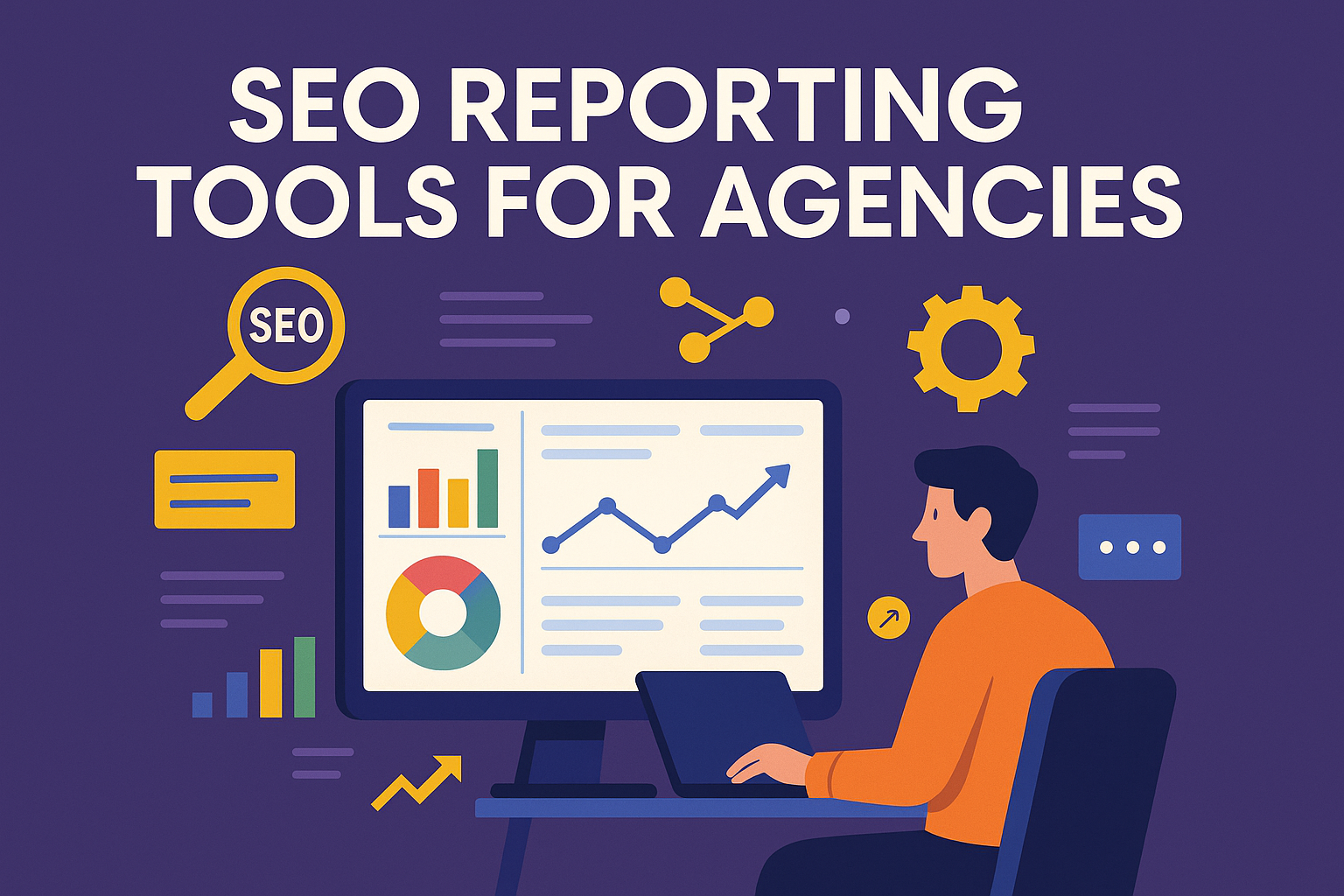Top AI Reporting Tools in 2025 (Both Free and Paid)
Key Takeaways
- AI reporting tools use algorithms to automate data analysis and report generation. This automation allows companies to convert even the most complicated data into actionable insights with less effort.
- These tools make working with data easier than traditional spreadsheets, efficiently managing massive datasets and equipping users with real-time, predictive analytics.
- Seamless integration with your existing systems and a greater emphasis on data quality will go a long way toward creating accurate reporting and a more efficient workflow.
- Automation significantly lessens the burden of manual work and accelerates the reporting timeline. This allows teams to refocus their efforts on higher-level, strategic initiatives, increasing overall productivity while reducing operational costs.
- Customizable dashboards and advanced analytics features enable more robust data-driven decision-making, empowering organizations to respond to evolving needs.
- Addressing data privacy, ongoing training, and continuous monitoring are essential for maximizing the benefits of AI reporting tools and preparing for future advancements.
AI reporting tools harness the power of artificial intelligence to automatically pull, sort, and display business data in real-time. These tools make it easier for teams to identify trends, measure progress, and find meaning in the data, all without having to do cumbersome manual labor.
In the United States, marketing agencies and SaaS teams use AI reporting to speed up their reports. This innovation allows them to more effectively minimize errors. Custom dashboards, seamless sharing, and automated updates save us hours each week.
All tools, except for one, easily integrate with Google Analytics and Facebook Ads. That’s how you store all the digits, baby! Other solutions, such as KPI.me, have affordable options that give teams the flexibility of robust tools without expensive costs.
Our primary session will cover the mechanics of these tools, their most important features, and how to compare and evaluate them.
What Are AI Reporting Tools?
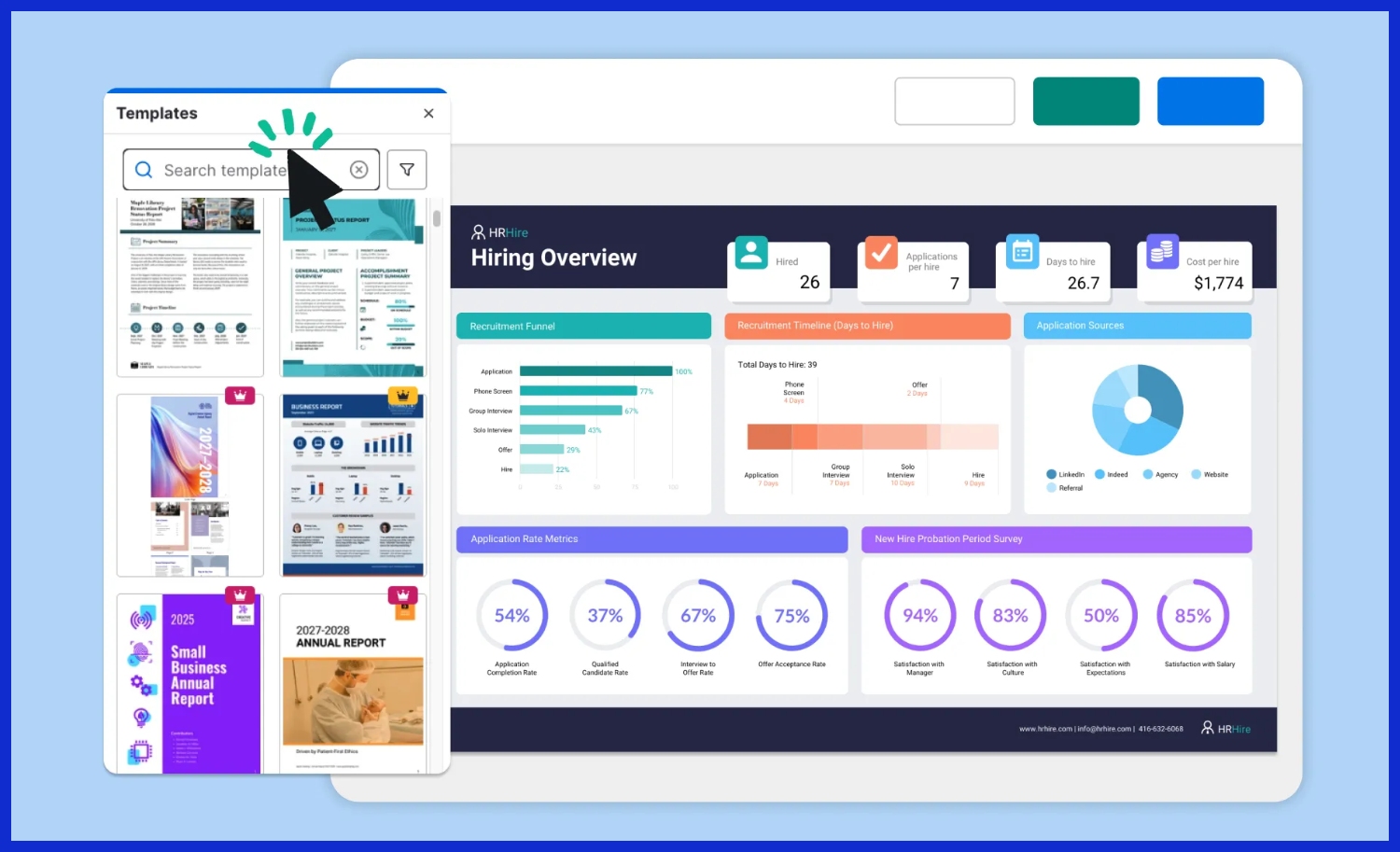
AI reporting tools, as a powerful business intelligence tool, are intuitive software primarily designed to streamline data processes and automate reporting. They leverage machine learning algorithms to extract meaningful insights and trends. This method provides a much clearer and more impactful way for data teams to identify what’s important in their data.
Previously, people completed all of these tasks manually using traditional reporting methods. Now, the heavy lifting is done by AI, resulting in fewer errors and quicker completion. Marketing teams, agencies, and SaaS users across the U.S. are experiencing the magic of these tools. They turn mountains of data into actionable reports that are easy to understand.
With features like data integration tools and custom report templates, AI reporting tools help users keep up with the latest info, not just old snapshots.
Beyond Basic Spreadsheets

Excel and other traditional spreadsheets quickly become inefficient for larger tasks and more complicated calculations. As data increases, everything becomes laggy and chaotic, leading to potential errors from crashes or lag. To combat this, leveraging a good AI reporting tool can streamline the entire reporting process.
AI reporting tools facilitate seamless work with big data sets. They integrate data from multiple sources, clean up the noise, and visualize findings with appealing dashboards. Instead of constructing complex formulas or manually copying information, users can utilize a powerful AI to generate advanced reports in just a few clicks, enhancing their data analytics capabilities.
By automating reporting and insights generation, teams can publish meaningful insights more easily, all without the tedious tasks associated with traditional reporting methods.
Key AI-Powered Distinctions
AI reporting tools are unique in that they include capabilities such as real-time insights and predictive analytics. Unlike traditional, static reports, these tools are dynamic, automatically refreshing as new data is received. They can identify patterns and generate predictions, enabling users to take timely action.
By reducing the amount of time spent doing manual tasks, automation allows more time to be spent on more important projects. Other tools, such as those that use conversational AI, allow users to pose questions and receive instant responses. This is huge for teams who need to be able to turn around answers quickly or need to be able to explain the data to a client.
How They Handle Your Data
These tools integrate with dozens of data sources, from Google Analytics all the way to different CRM systems. Their intelligent algorithms validate and scrub data, resulting in cleaner, more accurate reports. For sensitive information, end-to-end encryption and third-party audits should be standard.
Why AI Reporting Beats Old Ways
AI reporting tools are ushering in a whole new era of creative collaboration! By leveraging data integration tools that utilize machine learning algorithms, these tools deliver speed, accuracy, and visually appealing reports that traditional manual processes simply can’t match.
They analyze data across multiple sources and present it in a way that empowers teams to make informed decisions more quickly. With a capable business intelligence tool, human error is significantly reduced, and guesswork is eliminated, allowing for more efficient performance monitoring and insightful reporting.
In knowledge work-heavy industries like journalism, AI already handles 9% of editing and 15% of reporting tasks. This transformation is not just about saving time; it’s about maximizing productivity and generating meaningful insights with less effort.
Faster Insights, Quicker Action
These AI reporting tools can help reduce hours of work to just minutes. For example, imagine a marketing agency has a report on a campaign due this afternoon. Using AI, that report appears instantly—in real time—not delayed by spreadsheets or sheets of paper requiring data entry.
Teams identify what’s effective and adjust strategy in real time. In news journalism, AI reduces transcription from 240 minutes, so stories get to the news much quicker. Companies that made the change experienced tangible differences—faster go-lives, reduced downtime, and more strategic decisions.
Save Money, Improve Operations
Reducing the amount of time spent on repetitive tasks equals reduced labor costs. These AI reporting tools help you stay lean and save money while you’re at it.
One media conglomerate’s transition to AI has already saved tremendous amounts of money in producing more stories with fewer employees, higher quality, and at a lower cost.
How AI Tools Sharpen Decisions
AI-enabled reporting tools provide teams with a central location for all their data, aggregating it from various databases, spreadsheets, and other sources. This configuration helps identify trends and better determine causes. With AI in their corner, teams can do more than consider the past.
1. Real-Time Data for Agility
Second, speed is everything. Since AI tools can draw from real-time data, teams can identify trends and patterns as they develop. This is critical across industries, including digital marketing, retail, and finance, where the greater the pickings are, the greater.
Take the world of marketing, for instance, where professionals monitor campaign results in real time and are able to modify ads on the fly. Retailers closely monitor inventory and sales, moving products or adjusting prices the moment new trends emerge. Quick and deep understanding leads to quicker, more informed decisions.
2. Predictive Analytics: See the Future
AI reporting tools rely on historical data to predict future outcomes. This type of predictive analytics allows businesses to identify changes in customer patterns or market trends before they occur. Retailers can better plan stock, and agencies can adjust campaigns in advance.
For example, a SaaS company could predict when users are most likely to drop off, allowing them to take proactive measures.
3. Automated Insights, Less Guesswork
AI reduces the amount of guesswork involved by analyzing metrics and translating complex raw numerical data into digestible stories and visualizations. That results in improved objectivity and precision—no one on the team is drawing conclusions based on fuzzy facts.
Businesses such as e-commerce brands leverage these automated insights to identify which products are generating the most sales, all without spending hours finding the answer manually.
4. Personalized Dashboards for Focus
Thanks to powerful AI, personalized dashboards have become a capable business intelligence tool for each user. With user-friendly graphics, agencies can create appealing reports for every client, enabling managers to effectively monitor their own KPIs.
5. Deeper Dives into Complex Data
AI can take large, complex datasets, such as digital traffic or purchase history, and turn them into digestible narratives, making it a powerful business intelligence tool for generating reports. Healthcare and finance companies leverage it to detect hidden patterns and take smarter actions.
Top AI Reporting Tools Unveiled
All these AI reporting tools have significantly impacted how teams manage data, reports, and ongoing updates. Gone are the days when Excel was enough to do the trick. Today’s tools can meet a lot more needs. They can help you monitor important metrics at a glance, create tailored dashboards, and conduct advanced analysis.
Some tools lean into one strength primarily, while others attempt to be a jack of all trades. Whether you’re an agency, an SaaS buyer, or a rapidly growing team, choosing the right tool starts with knowing what’s out there. That means you should try a few out and see what fits your business workflow!
Check out these AI reporting tools we have picked for you:
KPI.me

KPI.me is an AI-powered analytics and reporting tool that allows you to monitor your key performance indicators across marketing, sales, and business operations. It enables you to connect multiple data sources like Google Analytics, Ads, and Search Console into one intuitive dashboard. Key features include customizable visual dashboards, automated reporting, goal tracking, and collaboration tools.
Whatagraph

Whatagraph is a marketing data platform tailored for agencies and in-house teams to automate reporting and visualize performance metrics. It supports over 40 integrations, offers pre-made templates, and allows data transfer to BigQuery. Advantages include a user-friendly interface and customizable reports, while disadvantages involve higher pricing for small businesses. Plans start at $199/month for 25 data sources and 5 users, with a 7-day free trial available.
Klipfolio

Klipfolio is a business dashboard platform that enables you to build real-time dashboards and reports. It offers over 130 data integrations, custom dashboards, and data modeling tools. Advantages include affordable entry-level pricing and real-time data updates, while disadvantages involve a steeper learning curve for beginners. Plans start at $90/month for 3 dashboards and unlimited users, with a free trial available.
NinjaCat
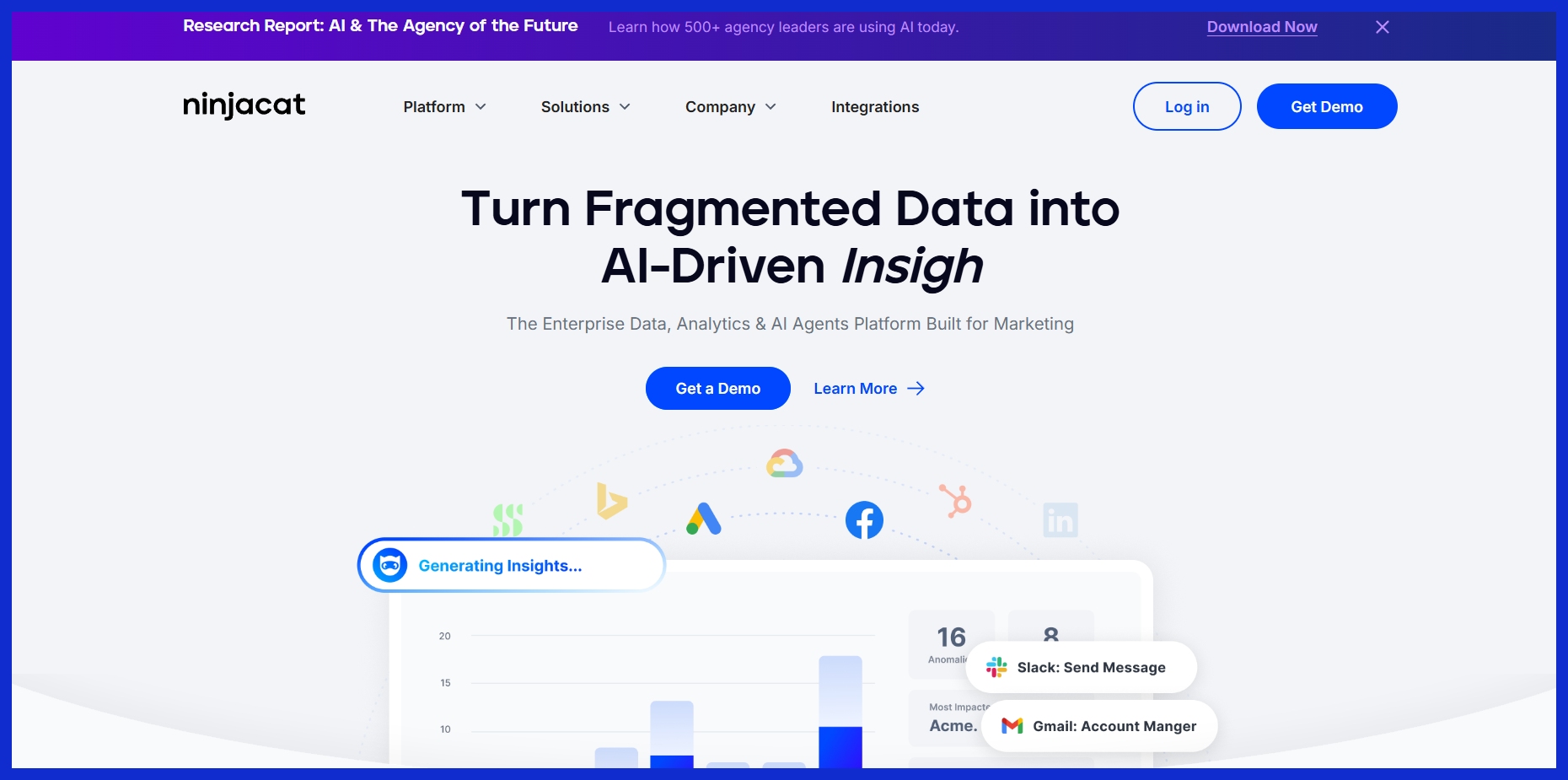
NinjaCat is a reporting platform designed for marketing agencies, focusing on PPC, SEO, and social media reporting. It provides automated client reporting, integration with major advertising platforms, and customizable dashboards. Advantages include comprehensive reporting capabilities and scalability for large agencies, while disadvantages involve a high starting price. Pricing starts at $1,500/month, with a free trial available.
Venngage
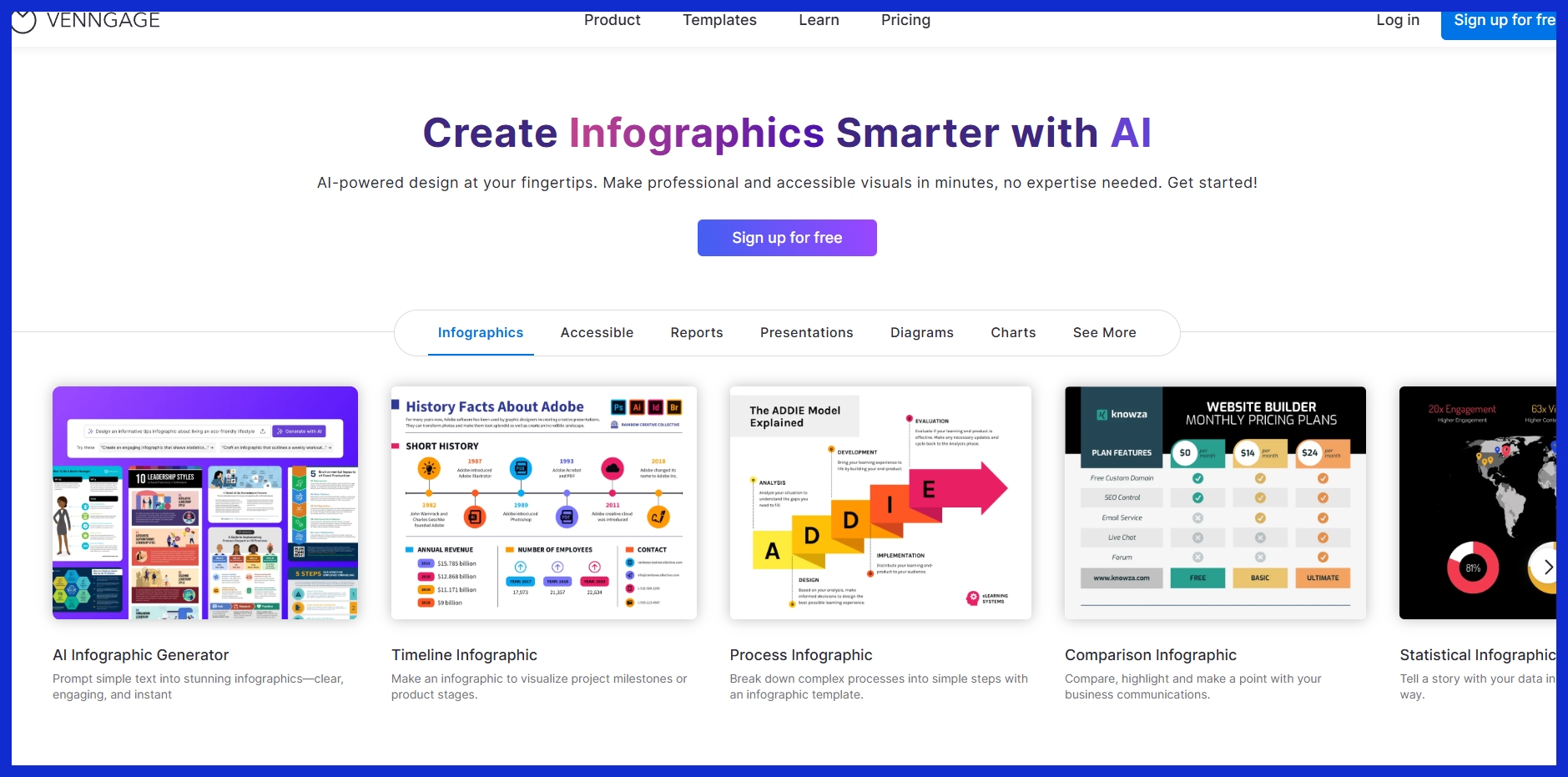
Venngage is an online infographic maker that helps you create engaging visuals and reports. It offers over 10,000 templates, a drag-and-drop editor, and branding tools. Advantages include a user-friendly interface and an extensive template library, while disadvantages involve limited features in the free plan. Plans range from a free version with basic features to a Premium plan at $10/month/user and a Business plan at $24/month/user.
Easy-Peasy.AI
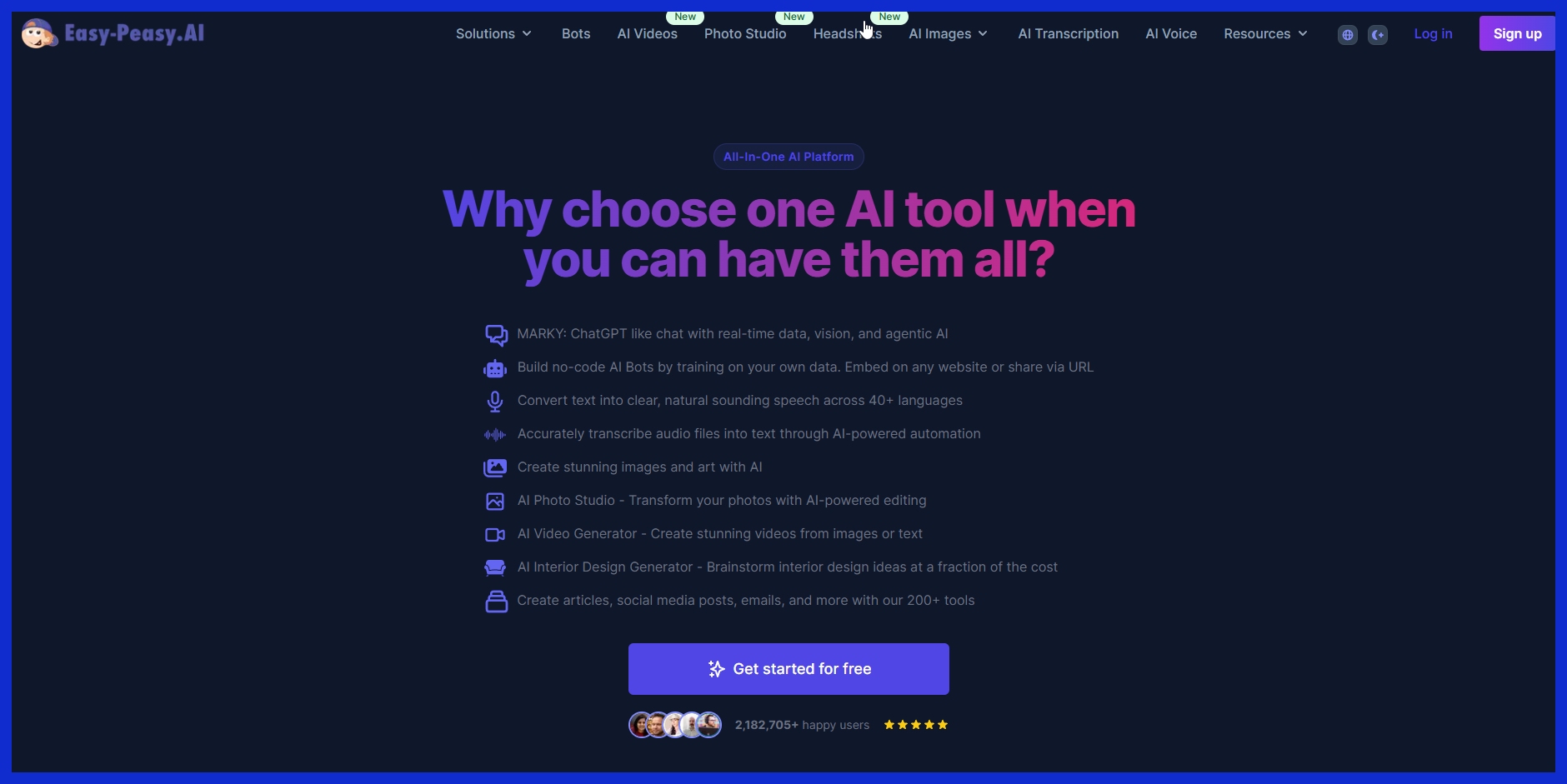
Easy-Peasy.AI is an AI-powered content creation platform for generating text, images, and audio. It offers over 300 templates, multilingual support, and text-to-speech capabilities. Advantages include versatile content generation and affordable pricing tiers, while disadvantages involve limited features in the free plan. Plans start with a free version offering 1,000 words, with paid plans at $8/month (Starter), $12/month (Unlimited 50), and $16.50/month (Unlimited)
Piktochart
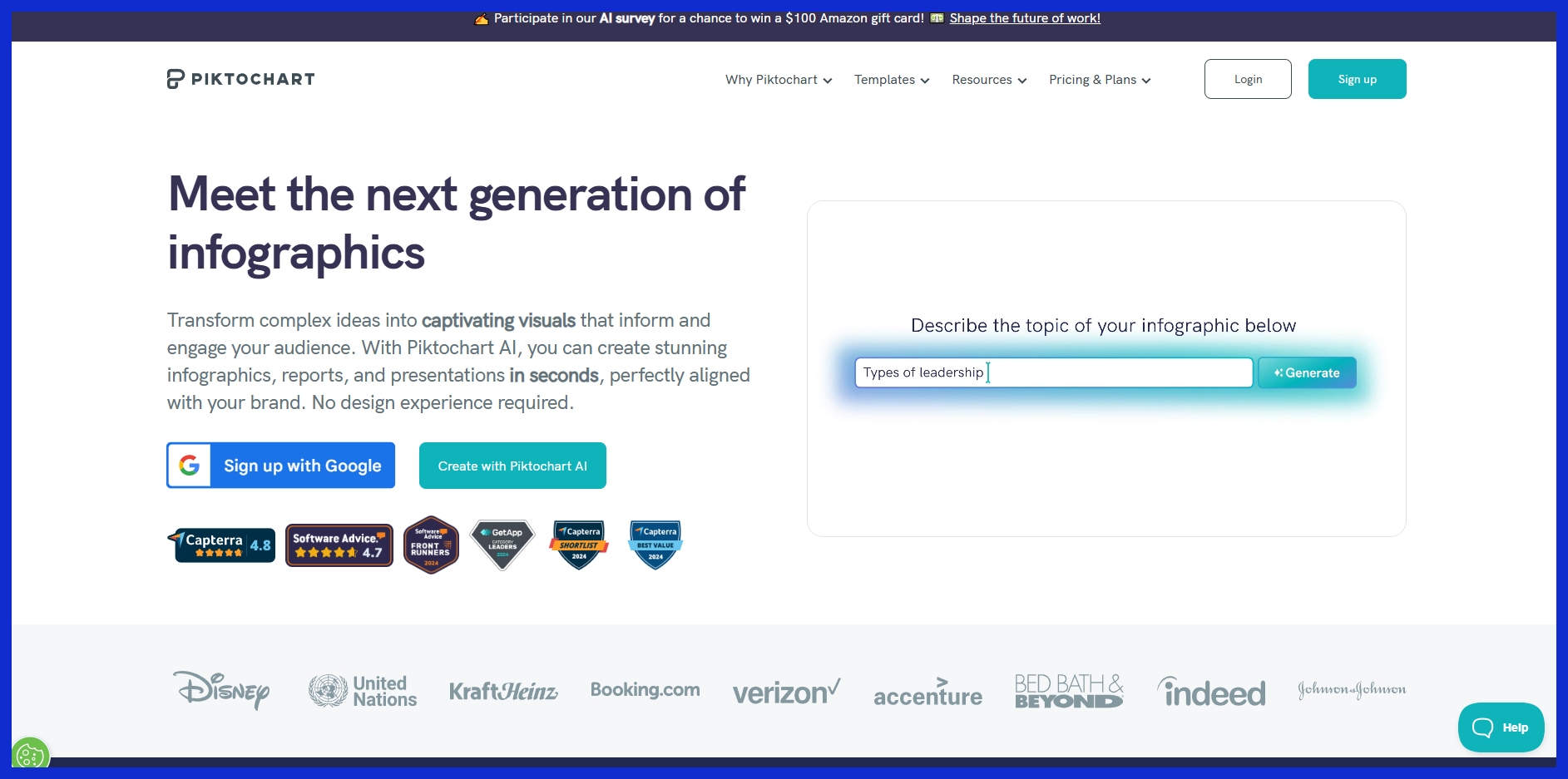
Piktochart is a visual communication tool for creating infographics, presentations, and reports. It features a drag-and-drop editor, various templates, and collaboration tools. Advantages include ease of use and a wide range of templates, while disadvantages involve limited downloads in the free plan. Plans include a free version with basic features, a Pro plan at $14/month (billed annually), and a Business plan at $24/month (billed annually).
Tableau

Tableau is a powerful data visualization tool used for business intelligence and analytics. It offers interactive dashboards, data blending, and real-time analysis. Advantages include robust analytics capabilities and scalability for large organizations, while disadvantages involve a steep learning curve and higher pricing for full features. Plans include Tableau Creator at $70/month/user, Tableau Explorer at $42/month/user, and Tableau Viewer at $15/month/user.
Power BI
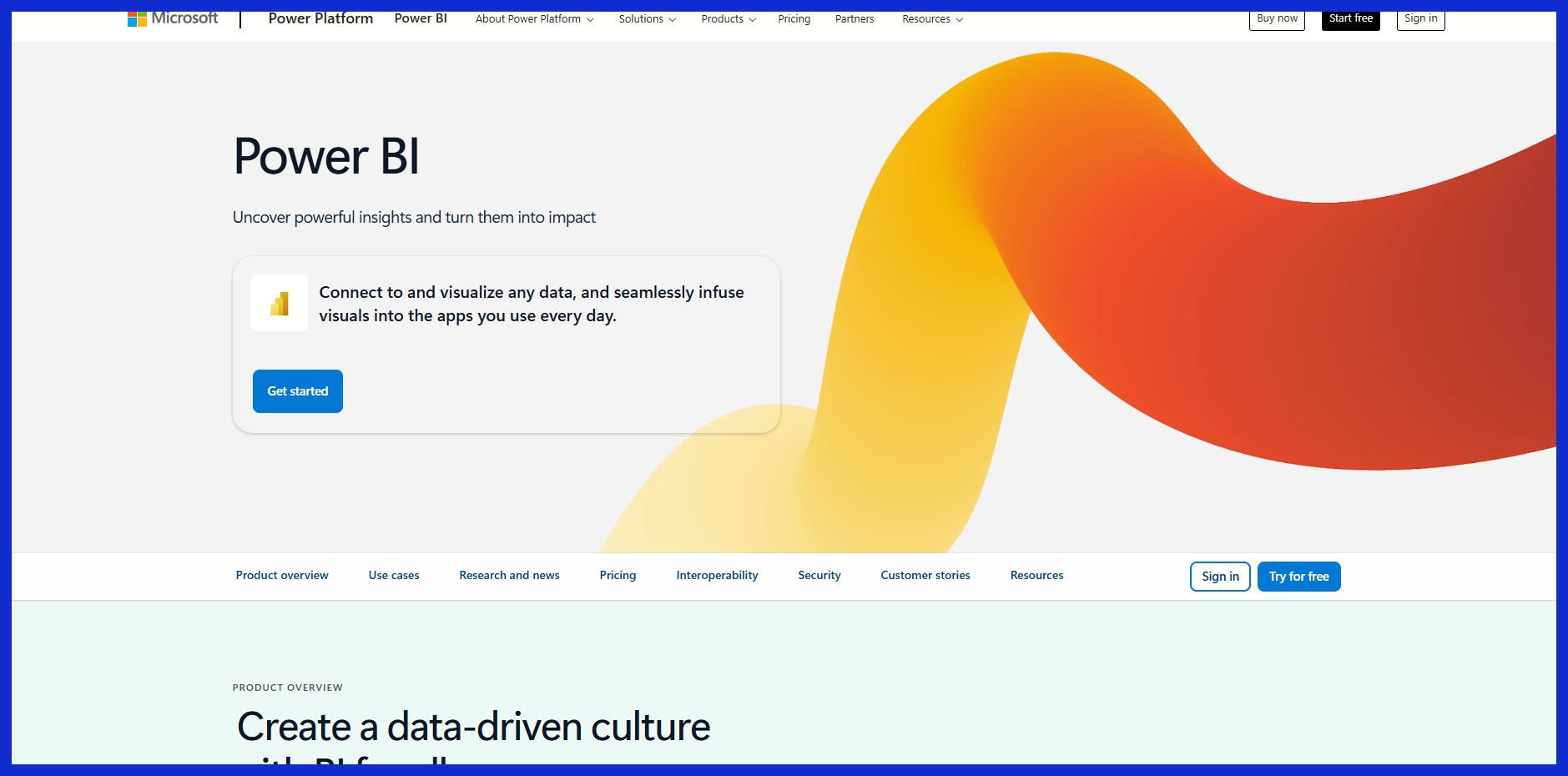
Power BI is Microsoft’s business analytics tool for visualizing data and sharing insights. It provides interactive reports, integration with Microsoft products, and real-time data access. Advantages include affordable pricing and strong integration with the Microsoft ecosystem, while disadvantages involve limited sharing in the free version. Plans include a free version with basic features, Power BI Pro at $14/month/user, and Power BI Premium at $24/month/user.
Domo
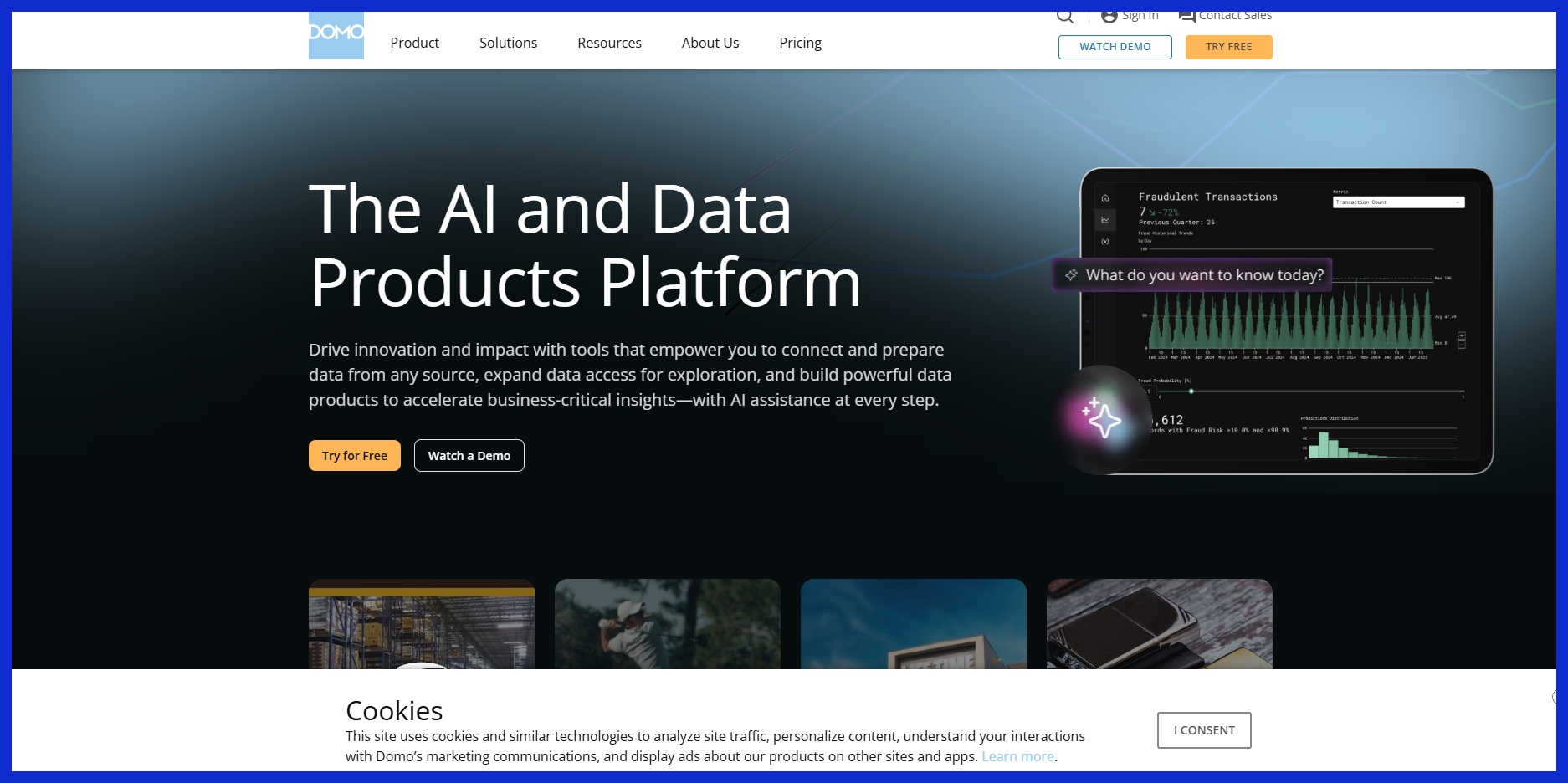
Domo is a cloud-based platform for data integration, visualization, and business intelligence. It offers real-time dashboards, data integration from multiple sources, and collaboration tools. Advantages include scalability for large enterprises and a user-friendly interface, while disadvantages involve non-transparent pricing and potential complexity for small businesses. Pricing is based on a credit-based system, with base user fees starting at $750 per year per user.
Pick Your Ideal AI Partner
The key to choosing an AI reporting tool is aligning its capabilities with your business’s objectives. Confirm that the tool’s main strengths match your day-to-day priorities. User feedback and reviews can give you valuable insight into how a tool works in practice.
Along the way, they point out any strings-attached coding snags or quirks in the free version. Consider free trials and pricing tiers, as expenses can quickly accrue with per-user subscriptions or limitations on features.
Here’s a quick checklist for picking your AI partner:
- Does it connect to your main data sources?
- Is the interface easy for your team to use?
- Can it grow as your business grows?
- Are analytics deep enough for your needs?
- Does it offer niche features you need?
- Is it set up fast with simple workflows?
- How much can you customize?
- What do reviews say about reliability and support?
- Are costs clear and plans flexible?
- Is there a free trial to test things out?
Smart Ways to Use AI Reporting
AI reporting tools have been changing the game for how teams work with data since their inception. They save agencies and businesses time and act as a force multiplier. They save time by reducing manual labor, but they derive new insights from large data sets.
To get the most out of these tools, integrate them into your existing workflows. By staying organized with your data and aligning reports to the right objectives. Regular, continuous review and training help to ensure that teams are sharp and reporting is on target.
Integrate With Existing Systems
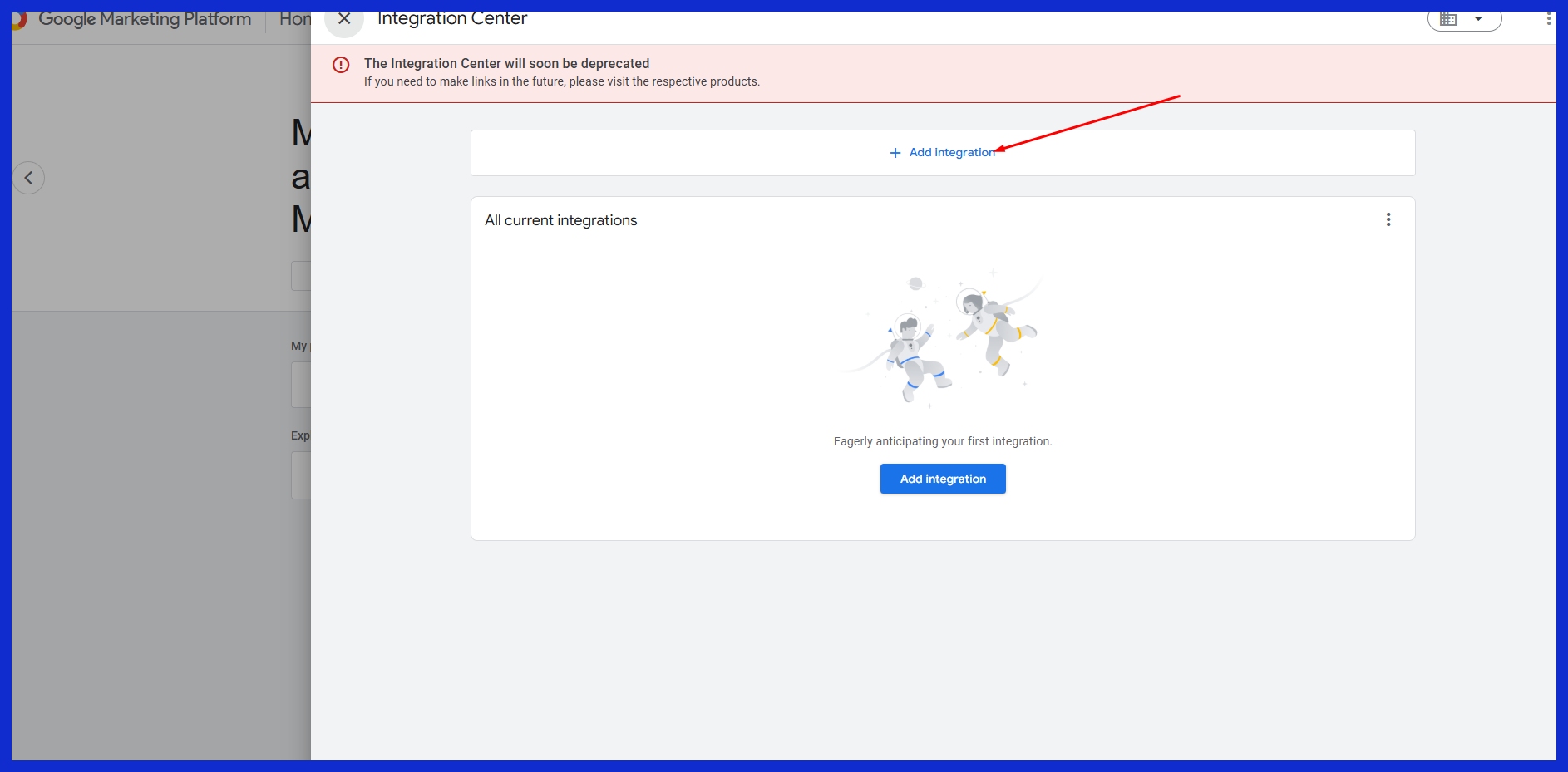
First things first, ensure any AI reporting solution integrates with the systems you currently use. This makes sure that the data moves smoothly, from CRMs to web analytics platforms. Most importantly, when everything connects, you eliminate double entry and increase accuracy.
For instance, integrating KPI.me with Google Analytics or HubSpot updates marketing metrics automatically, so there’s no need to do it manually. The better the integration, the less chance for errors and the quicker the outcome.
Prioritize Clean, Accurate Data
To that end, we need clean, accurate data that AI tools can leverage. Accurate and clean data will result in valid, reliable insights. Schedule routine audits to remove duplicates and identify mistakes.
Consider data management tools such as Talend or Microsoft Power BI to help you manage your metrics. Solid data governance ensures accountability and integrity, while increasing trust and confidence among your organization’s team members.
Tailor Reports to Your Goals
Custom dashboards help you zero in on the KPIs that are most important to your business goals, be it driving sales growth or boosting website engagement. Consider implementing filters and templates that emphasize emerging trends and changes, enabling management to make informed and timely decisions.
That way, reports have more purpose than just being eye candy—they inform action.
Empower Your Team Through Training

To truly maximize AI’s potential, organizations must empower their teams through training. Conduct workshops and create a hub of how-to resources. When everyone’s well-informed, collaboration increases and the potential for error decreases.
Looking for online tools with built-in tutorials and robust customer support, and depending on those as your best friends.
Continuously Monitor and Adapt
Reassess your configuration every three to six months to identify what’s successful. If your business goals change, adjust the reports accordingly. Businesses that maintain a consistent cadence of reviews identify holes sooner and maximize the value of their data.
KPI.me users, for instance, are able to use these feedback loops to continuously improve their dashboards in the months and years after launch.
Hurdles and Future of AI Reports
These new AI reporting tools have made it simpler and efficient for teams to manage data and receive straightforward reports in less time. A few challenges are preventing most entities from really jumping in. Deriving value from AI solutions isn’t easy. This frequently occurs when the data is of poor quality or the tools lack compatibility with existing systems.
Far from it, as most teams can’t even keep up with the rapid changes of tech. They are concerned about the deskilling that occurs as AI takes on the majority of the heavy lifting.
Navigate Data Privacy Waters
Data privacy, especially with a focus on AI, is an essential consideration in reporting. With greater restrictions, such as the CCPA in California, teams are responsible for implementing robust data policies. Some best practices might involve providing clear data consent, conducting regular audits, and using tools that encrypt data and limit access.
Tackle Implementation Roadblocks
Rolling out new AI reporting runs into roadblocks, including a lack of expertise, resistance from staff, and limited bandwidth. To overcome these, it will take spreading success stories and showing in tangible terms what the change will look like.
Glimpse AI Reporting’s Future
Here’s a glimpse into AI reporting’s future. Agentic AI, which acts more independently, is increasing. Teams can expect to find more real-time data dashboards and advanced insights.
AI will work alongside humans, not take their jobs, to deliver the most informative reports. If implementation trends are any indicator, gen AI is just getting started, with 71% of companies already using gen AI.
Address AI Bias Concerns
Tainted data leads to tainted insights, so teams should strive to use varied data types and actively validate outputs for equity. More companies than ever are auditing AI tools.
They replace it with more diverse training data and assemble diverse teams to identify bias at the outset. This goes a long way in helping make AI reports equitable, transparent, and trusted.
Conclusion
With AI reporting tools, it’s a game-changer for agencies and in-house teams alike looking for low-hanging fruit and easily digestible data. These tools eliminate unnecessary steps, provide more precise calculations, and seamlessly integrate into everyday marketing operations. Say goodbye to complicated spreadsheets and late-night calculations.
People in Los Angeles or New York watch their reports get produced much more quickly, and with much less pain. Whether it’s a small shop or large construction crews, everyone can benefit from these tools to identify trends or correct issues before they escalate.
Looking to take intelligence-informed steps that deliver major impact? These smart AI reporting tools will put you ahead of the game. Want to find out just how simple reporting can be? Take KPI.me for a spin and watch actual data allow your team to operate quicker and more intelligently, with no trouble.
Frequently Asked Questions
What are AI reporting tools?
AI reporting tools leverage artificial intelligence to automate data collection, analysis, and presentation, making them a powerful business intelligence tool. For businesses across the U.S., they save hours, increase accuracy, and deliver meaningful insights more quickly than traditional reporting methods.
How do AI reporting tools improve decision-making?
First, AI tools can more quickly identify trends and patterns in large data sets, enhancing business intelligence and insight generation. This ensures that leaders in Los Angeles and all over the U.S. are better equipped to make the smartest, most data-driven decisions possible.
Are AI reporting tools easy to use?
Additionally, most contemporary AI reporting tools, such as a capable business intelligence tool, come with customizable, user-friendly dashboards. With minimal training, even novices can generate reports and derive meaningful insights from them.
Can AI reporting tools work with my current software?
Can AI reporting tools integrate with my existing software? This integration allows you to leverage data integration tools for storing all your data in one powerful business intelligence platform.
What industries benefit most from AI reporting tools?
What industries benefit most from AI reporting tools? Whether it’s the finance, healthcare, or insurance sector, any industry that relies on data analytics and generating reports can maximize its potential.
Are AI reporting tools secure?
The most reputable AI reporting tools, such as a capable business intelligence tool, implement at-rest and in-transit encryption while ensuring compliance with U.S. data privacy laws. Always verify that any provider you work with complies with your locality’s requirements.
How much do AI reporting tools cost?
How much do AI reporting tools cost? Prices vary. A few tools have free basic plans, but you might need to pay for a monthly subscription to access advanced features. Though some U.S. companies have been hesitant to invest, those that do often see the investment pay off by saving time and generating reports that produce more actionable insights.

